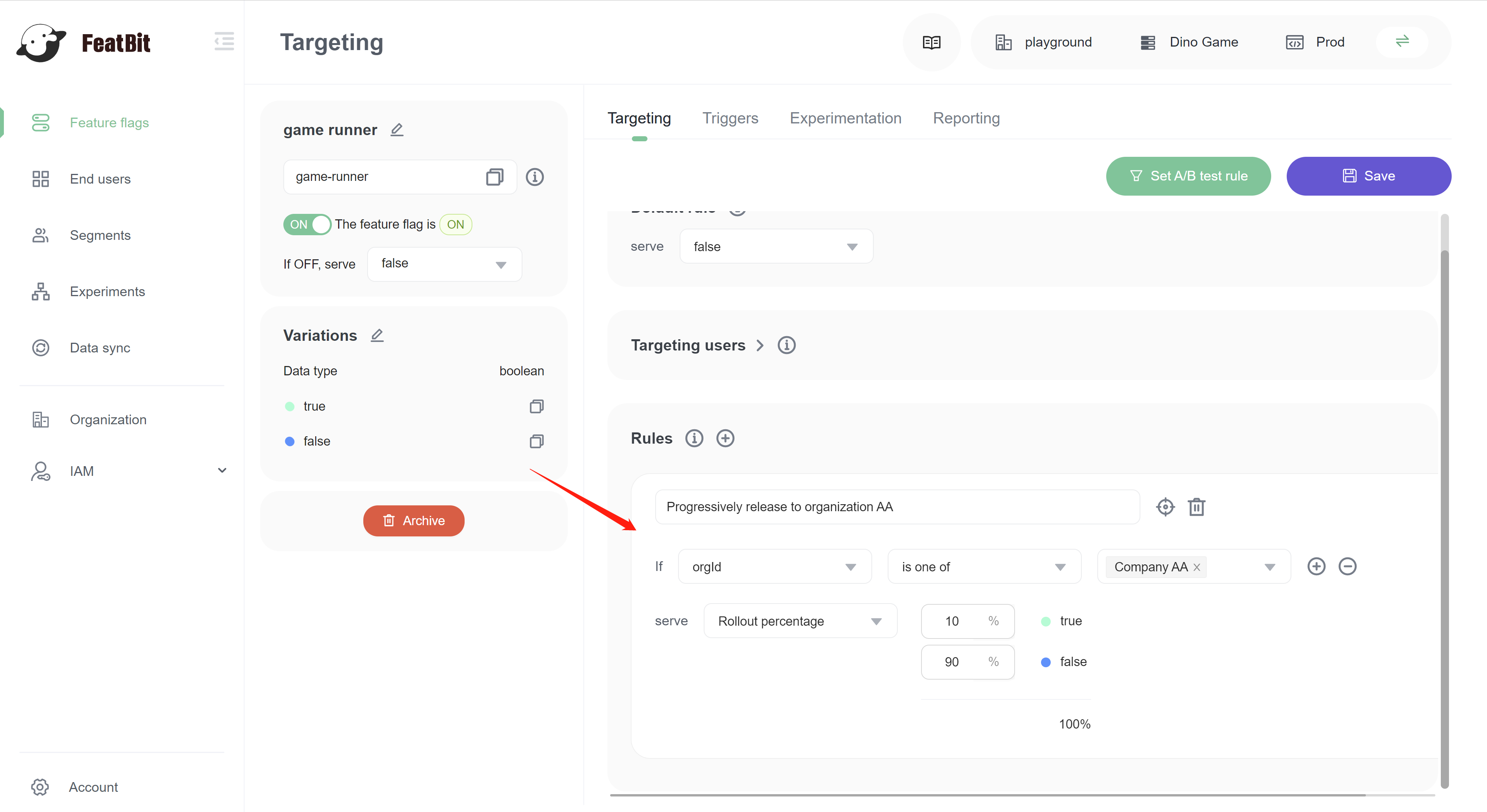Innovate
Your Software
Faster without Risk
Innovate Your Software Faster without Risk
Using Feature Flags for Percentage Rollout in Modern Software Development

Introduction to Feature Flags for Percentage Rollout
What are Feature Flags?
Feature Flags are switches or toggles that enable developers to turn particular features on or off within a software application. They are an essential part of modern software development and help programmers implement new features, test changes and perform A/B testing, without disrupting their users' experience. These flags can be managed via a configuration file, a database or even via code, and they are easy to update, deploy and monitor. By using feature flags, developers can control risk and complexity in the software development process, and gradually introduce changes with minimal impact on their end-user base.
Why Use Feature Flags?
The use of feature flags has become a popular method for software developers to implement progressive delivery strategies. Basically, a feature flag is a mechanism that allows them to selectively enable or disable certain parts of a software application or service. This feature is used during the development process to reduce risk and allow for more precise and measured deployment of new features. With feature flags, developers can roll out new features to a small percentage of users, observe how they work, and adjust as necessary before a full launch.
By implementing feature flags, developers have the flexibility to control and measure their software’s release in real-time. They can immediately halt a feature rollout if it’s causing problems or accelerate it if it’s a success. Using this approach significantly reduces the risk of releasing new features that may cause unexpected problems. Therefore, the use of feature flags has become a must-have tool for modern software development teams.
The Advantages of Using Feature Flags for Percentage Rollout
Flexibility of Feature Flags
The flexibility provided by Feature Flags is one of the most significant advantages of using percentage rollout in modern software development. With Feature Flags, developers can turn on and off features for specific users, customer segments, or entire user bases. This flexibility allows developers to make targeted changes without disrupting the entire system. Moreover, this ability to fine-tune the rollout process allows developers to identify and address any issues that may arise during the rollout.
In modern software development, where agility and responsiveness are key, Flexibility is vital. Developers can use Feature Flags to test new features with small groups of users to see how they react to them. They can then use this feedback to make any necessary tweaks before rolling out the feature to the broader user base. This process ensures that software updates are smooth and seamless, and users receive optimal experiences. Overall, the flexibility provided by Feature Flags is a game-changer in modern software development, saving time, resources, and delivering better software products to end-users.
Ease of Use for Developers and Product Managers
Feature Flags are popular among developers and product managers due to their ease of use during the development process. They are easy to implement and can be used by both developers and product managers even without deep technical knowledge. Developers can set conditional statements in their code which are linked to feature flags. This helps product managers to select and configure the percentage rollout for a specific feature. Hence, feature flags make it easy to verify the functionality of a new feature in real-time and control its rollout level.
Apart from being easy to implement, feature flags also provide the flexibility to enable or disable a feature for specific users or groups. This can aid developers in testing new features in real-time and providing feedback to the team. Also, product managers can control the percentage rollout of a new feature across a specific geographic location or demographic. By using feature flags, the roll-out of new features can be slowed down or halted if any issues arise during the testing phase. Feature flags also allow new features to be rolled back to previous versions without waiting for a new release.
Using FeatBit as a Feature Flags Tool
What is FeatBit?
FeatBit is an open source feature flags tool that can be applied to execute percentage rollout. It allows software developers to run experiments on a production environment with a controlled group of users in order to minimize application downtime and errors. FeatBit provides robust and flexible feature flagging capabilities that permit easy toggling of functionality on and off at runtime without compromising the stability of the system. It also offers various advanced options, such as targeting specific user segments or time-based activation, thus enabling teams to effectively manage and deliver new features to their users.
Using FeatBit as an open source feature flags tool allows developers to achieve continuous delivery and testing of new software capabilities at a lower risk. By taking advantage of its features, developers can safely release new features to a small subset of users to gain insights into their performance before introducing them to a wider audience. This approach significantly reduces the chance of bugs and other errors occurring in the entire user base, thus benefiting both the users and the developers.
How to Use FeatBit for Percentage Rollout
Using FeatBit as an Open Source Feature Flags Tool is a great option for implementing percentage rollout in modern software development. FeatBit is an efficient tool that is easy to set up and use, making it ideal for software developers. The feature flags can be created, tested, and deployed easily using FeatBit, and the results can be monitored in real-time, allowing for quick adjustments.
To use FeatBit for Percentage Rollout, follow these steps:
- First, create a feature flag with a specific percentage rollout.
- Then, apply the flag to the relevant code that will be affected by the rollout.
- Finally, watch the results in real-time and make adjustments as necessary.
With FeatBit, you can easily integrate feature flags into your software development process, making the process more efficient and streamlined. Here's an example with ccode and UI portal.
var flagValue = fbClient.variation("YOUR_FEATURE_KEY", defaultValue);
if(flagValue === 'true'){
runFeature();
}

Percentage rollout is very similar to Progressive Rollout, and Gradully Release. You can click on each link to get more information.